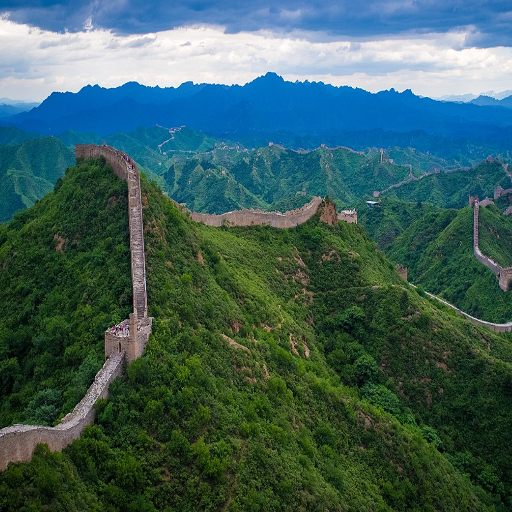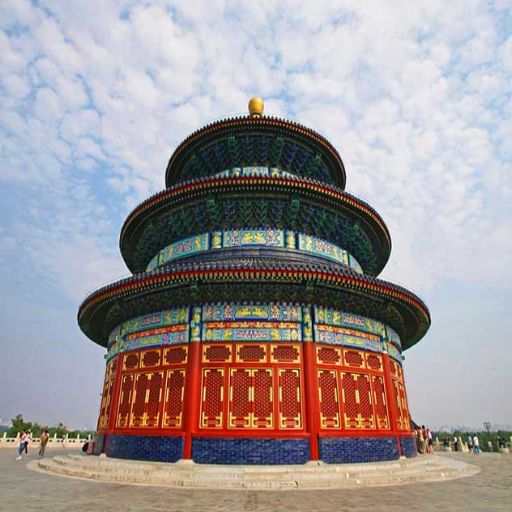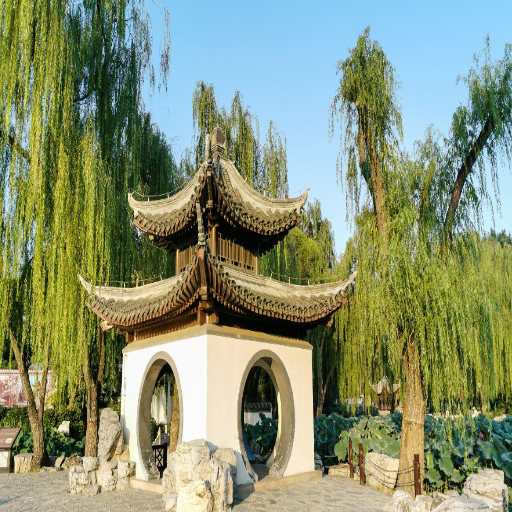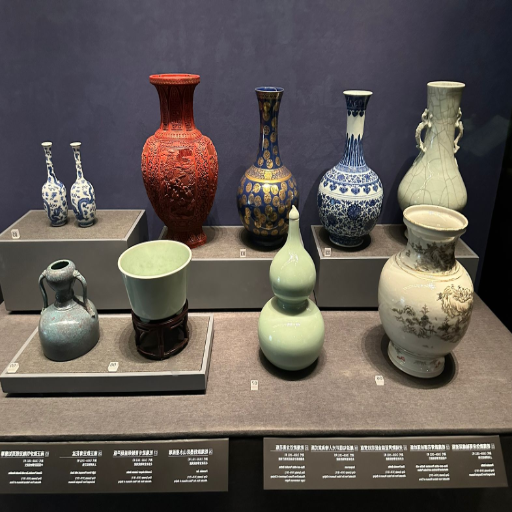Beijing, the capital of China, is an ancient city with modern innovations. Beijing is famous for various reasons, from the city’s invaluable historical landmarks, lively cultural scenes, and a wide range of food options, all contributing to Beijing being an extraordinary travel destination for visitors from all over the globe. In this guide, we will take you through the city’s famous architectural marvels and lively local districts, wherein locals charm with their hospitality. If you enjoy history, are a food enthusiast, or want to delve into an unusual mega city, this blog assists you in navigating around the capital at its finest.
What Are the Must-See Attractions in Beijing?

Why Visit the Forbidden City?
The Forbidden City is a one-of-a-kind cultural and historical site that embodies the might of ancient Chinese dynastic rule. It was built as China’s polity and ceremonial focal point from 1406 to 1420 during the Ming Dynasty for about half a millennia. It encompasses the largest, best-preserved palace complex in the entire globe, with a stunning area of 7.75 million square feet. Its exceptional traditional Chinese architecture, detail, and symbolism stem from Confucianism and captivates visitors worldwide.
Size: It spans over 180 acres and houses almost a thousand buildings, totaling over 8,700 rooms.
UNESCO Recognition: Awarded the title of World Heritage Site in 1987 for its significance in history and culture.
Materials: Wood, marble, and glazed tiles exhibit skillful construction craftsmanship.
Architectural Significance: Known for classic features of Chinese palaces, like the Hall of Supreme Harmony and Meridian’s Gate, which are feasts for sore eyes.
Visiting the Forbidden City provides an intimate understanding of Chinese imperial history and enables travelers to admire the magnificence of ancient Chinese architectural designs.
What Makes the Great Wall of China Unique?
The Great Wall of China is an example of China’s historical unification and defense in engineering, representing the monumental feat of construction and perseverance.
Length and Structure: The wall is more than 13,000 miles long, forming a polygonal shield of walls along the border. It is mainly built of stone, brick, tamped earth, and wooden planks. This magnificent structure stands unchallenged regarding its length.
Historical Purpose: The primary purpose of erecting the wall was to avoid invasions while enabling trade through the Silk Road to be regulated by serving as a defensive wall/barrier.
Engineering Complexity: This wall’s remarkable construction ingenuity is displayed through mountainous, desert, and plateau terrains.
Cultural Significance: It has served as a proud, inexhaustible symbol of China’s strength and unity throughout the centuries, and its UNESCO World Heritage Site title further cements its global relevance.
There are ongoing preservation and research initiatives into the Great Wall, ensuring that its one-of-a-kind legacy does not fade and can be comprehended and admired by future generations.
Exploring Tiananmen Square: What to Expect
In the middle of Beijing lays Tiananmen Square, which serves as one of the largest public squares across the globe. This stunning and massive square testifies to China’s prosperous past and endeavors and its modern political significance. It is one of the most frequently visited centers by tourists because it forms the heart of the mainland. Some of the landmarks which carry tourism and cultural significance are,
Tiananmen Gate (Gate of Heavenly Peace): This toll booth is named after the square and serves as the entry point to the Imperial City. The portrait of Mao Zedong decorated at the centerpiece adds importance to the gate.
Monument to the People’s Heroes: This 38-meter granite monument commemorates the people who died for China’s revolution and independence.
Mao Zedong Memorial Hall: This is the hallmark structure and mausoleum of Mao Zedong, whose body is embalmed for the public. He eternally opened the highlight of the dead leader’s politics within China.
The Great Hall of the People: This building rests on the west side of the Square and is intended for decoration, legislature, and other landmark activities. It also symbolizes China’s efficiency and aesthetics.
National Museum of China: Positioned on the East side of the square, the museum houses history exhibits and has over a thousand years of artifacts in its collection, which crown the history of China.
One must pay attention to the square’s security arrangements, such as bag screenings and monitoring, which underline the site’s importance from a modern-day political viewpoint. For one of China’s most iconic landmarks, plan to stroll through the large area and understand the history that surrounds it as early in the day as possible.
Which Temples Should You Visit in Beijing?

Unveiling the Temple of Heaven
Built-in the early 15th Century during the Ming Dynasty, the Temple of Heaven is one of Beijing’s most famous landmarks and is highly historically significant to the country. It was created as a sacred site where the emperors conducted yearly praying ceremonies for bountiful harvests. With exquisite symbolism highlighting the relationship between heaven and earth, the complex spans over two hundred seven million square meters.
The temple has specific highlights that set it apart from the rest. One such highlight is the Hall of Prayer for Good Harvests, which is exquisitely decorated. It is a circular building supported by a circumference of wooden pillars and contains no nails. The temple also has the Round Altar, which amplifies sound to be directed towards the heavens for the ceremonies conducted by the emperor. Two distinct shapes can be observed from the layout of the entire temple, representing both Earth as rectangular and Heaven as circular. This reflects ancient cosmology principles. It’s recommended to fully explore the temple for 2 to 3 hours to witness its stunning beauty and the tranquility of aged cypress trees. The Temple of Heaven is open throughout the year and is a great way to give insight into China’s historical architecture and spiritual traditions.
Experiencing Culture By Visiting The Lama Temple
It is located outside of Tibet and is one of the most famous Tibetan temples. The stunning architecture, which incorporates Han Chinese and Tibetan details, carvings, colors, and decorations, mesmerizes the place. It is also known as the Yonghe Temple.
A monk ceremonial site or ‘The Hall of Harmony and Peace’ captures the attention of many due to the monk activities performed there. The advanced symmetry, together with the balance, integrates impressive sights to behold. The majestic 26-meter-high Maitreya Buddha statue is something that will strike awe to everyone as it is made from one piece of sandalwood. It is believed that around 2-4 hours is ideal for this visit, and it is recommended to arrive in the morning for peace as well. Low admission prices make it easier for someone to go without feeling overwhelmed.
Everything You Should Know about the Beijing Temple Of Confucius
Located in the city’s center, the Beijing Temple of Confucius has been built to remember one of the most revered philosophers in history – Confucius. This temple was erected during the Yuan dynasty in 1302, making it one of the most prominent temples dedicated to Kongzi, known as Confucius, in the West of China. The temple is a landmark for tourists interested in ancient Chinese philosophy and culture. The visitors can enjoy the concept of the preserved architecture, along with the intricately carved stone tablets, stele of the ancients, and fascinating pavilions.
Reason to Visit: The temple is over 700 years old and represents the last legacy left behind by Confucius’s thoughts.
Architecture: The site has four courtyards, the most important of which is Dacheng Hall, Chongshengci.
Area: The temple covers an area of almost 22000 square meters, which allows enough room for tourists and visitors.
Cultural Artifacts: The collection comprises more than 198 stone tablets and the 13 Confucian classics carved in calligraphy, which is considered the most delicate form of writing.
Recommended Visit Timing: Mornings are highly recommended for a peaceful experience without too many crowds around.
The temple not only pays tribute to the great philosopher Confucius but also offers a glimpse into the intellectual and cultural heritage that has built Chinese civilization for decades.
What Are the Best Parks and Outdoor Attractions in Beijing?

Exploring Beihai Park: A Historical Gem
Long cherished and enjoyed as a historical park, Beihai Park showcases an extensive nine hundred years of imperial history. The park was initially built during the Liao Dynasty and underwent modernization in the following years. The park integrates traditional Chinese landscaping style and culture. More than half of the park, which spans over 171 acres, is home to the charming Beihai Lake, where one can go on boat rides. Beihai Lake is also dotted with islands. Jade Flower Island is home to the White Dagoba, a Tibetan-style stupa that symbolizes peace and ethnic integration. Visitors can also explore ancient pavilions, peaceful gardens, and elaborate rock formations.
Attractions at Beihai Park:
White Dagoba: A stupa built during the Qing dynasty in 1651. It rises to a height of 36 meters and features numerous devotional inscriptions.
Beihai Lake is characterized by soothing waves perfect for sailing boats and stunning views reflecting the surrounding architecture.
Nine Dragon Screen: A stunning tile work and the only one of the three remaining in the country.
Tips for Visitors:
Timing: The recommended visit would be early morning or late; otherwise, expect big crowds.
Entry Fee (2023): Around 10RMB for off-peak season and 20RMB for peak season. Special revolves above White Dagoba’s charge to climb it.
Access: This park ensures visitors have a pleasant experience. It is kept clean and has walkable and wheelchair-accessible paths for people of all ages.
Not only is Beihai Park visually pleasing, but it also serves as a lasting entrance to Beijing’s cultural and historical treasures.
Things to Do in Jingshan Park
Climbing the Hill for 360-Degree Views: The central hill of Jingshan Park is one of the best spots in Beijing. Standing at the peak, tourists can marvel at the breathtaking views of the Forbidden City on the southern side, while the impressive Drum and Bell Towers can be seen to the North. Great photo shots can be taken on days that are clearer than most.
Lookout Wanchun Pavilion: A cultural masterpiece and a symbol of the park, the Wanchun Pavilion is a historic structure located at the top of the hill. It showcases the Chinese architectural style, adding to the cultural experience on any visit.
Seasonal Flower Viewing: In spring, visitors in Jingshan can see peonies show off their bloom. In autumn, the chrysanthemums take center stage. Jingshan Park witnesses the blooming of flowers of all types at all times of the year.
Cultural Experiences: Besides the floral experiences, the park offers a variety of different and unique cultural activities. These features include performances of traditional Chinese music and highlight Jingshan Park’s deep roots in local culture.
Leisure and Relaxation: The park’s tranquil setting makes it an exceptional place to take a walk or sit down and think. Its shaded pathways and picturesque spots also serve as a break from the busy city.
Remarkable History: Jingshan Park has been a notable component of Beijing’s history since the Ming Dynasty. Walking around the premises provides artifacts and tales from its past, giving visitors a complete history lesson.
Why Visit the Summer Palace?
This UNESCO World Heritage site is located in Beijing, China, and is considered a treasure in the world of culture. It is an example of Chinese landscape garden design and architecture. It is famous for its integrated natural and construction beauty, which adds to its cultural heritage. There are a few reasons to visit here, as it is a unique place to sightsee.
Architectural Scenery: The Summer Palace has bold Chinese architecture, such as the Tower of Buddhist Incense, the Long Corridor, and the Marble Boat, which all have intricate designs and symbolize imperial beauty and elegance.
Breathtaking Nature: It incorporates tidy bridges, pavilions, and carefully created landscape gardens. Summer Palace encompasses 2.9 square kilometers and is centered around Kunming Lake and Longevity Hill, which adds to its outdoor beauty.
Cultural and Historic Importance: The palace park’s colorful past stretches from the east to the west. It was constructed in 1750 and later renovated in the Qing Dynasty, which gives it a core mark of rich Chinese history and art.
Leisure Opportunities: Visitors can capture the scenic beauty around them while riding on the boat on Kunming Lake. Many other eye-catching trails and traditional places to enjoy tea on the grounds exist.
People worldwide are drawn to the Summer Palace to experience the summer and the astounding nature. It stands tall as an incredible monument of culture.
What Museums Should Be on Your Beijing Itinerary?

Focus Areas of the National Museum of China
The National Museum of China is a must-see when comprehending the nation’s rich history and culture. It is one of the largest museums globally, located on Tiananmen Square, with over 1.4 million relics, each representing several years of Chinese history.
Artifacts: The museum’s iconic treasures are the Simuwu Ding, the largest bronze vessel from the Shang Dynasty, and the exquisite Jade Burial Suit from the Han Dynasty. Both show the Bonze-age skill level and artistry of Chinese masters.
Manuscripts: Visitors can find ancient writings and government orders and display China’s art in documents illustrating how China’s government and culture changed over time.
Modern History: The museum also displays China’s revolutionary history, focusing on the major events, movements, and world-changing leaders who molded the country.
Technical Details: The museum is in an astonishing 200,000-meter square with 48 exhibit halls. It also has modern technologies for preserving and displaying the items, promising the relics to be in the best condition for the audience.
The National Museum of China boasts a modern facility and an exhaustive collection, making it an essential spot to visit when traveling to Beijing.
What to Expect at the Museum of China
With the powerful narrative of the National Museum of China, visitors can explore the deep history and culture of the nation along with its rich artistic accomplishments. With the technical aspects of your visit in mind, here are some key highlights:
Exhibition Highlights: The museum has more than 1.4 million items of cultural property in its collection, which includes ancient sculptures, pottery, jades, bronzes, calligraphy, and even revolutionary souvenirs. Visitors will marvel at famous artifacts such as the Simuwu Ding, the largest bronze vessel in the world, and exquisite jade burial suits from the Han Dynasty.
Innovative Technologies: State-of-the-art climate control technology ensures that delicate artefacts are housed in an optimal temperature and humidity of 18-22 degrees Celsius and 40 to 60 percent. Integrated lighting technologies provide great illumination while protecting from harmful Ultraviolet rays.
Interactive Experiences: Multiple digital screens and AR installations help visitors learn and experience history in an engaging way.
Accessibility: Tours are offered with a guide in various languages, and the museum infrastructure is equipped with elevators and ramps for easy access by people using wheelchairs.
Facilities: There is also a library, a gift shop selling unique replicas, and cafes for refreshments on the museum grounds, serving as additional amenities.
By employing elements such as modernity and innovation, the National Museum of China safeguards the past and ensures all visitors have a thorough and lively experience.
Should You Visit the Beijing Zoo?
If you want to view numerous species of animals in one of the oldest zoological parks in China, the Beijing Zoo is a must-visit. As a foreign traveler, I found visiting interesting because of the blend of wildlife exhibits and traditional Chinese Landscape Architecture. The zoo’s area exceeds 200 acres and is home to more than 400 species, including giant pandas, golden snub-nosed monkeys, and rare Siberian tigers.
From a technical point of view, the zoo has all the necessary facilities for visitors. There is a visitors’ center for convenience, rest areas, and clearly marked pathways that assure smooth navigation. The park’s infrastructure encompasses numerous cafes and rest areas and makes provisions for people with special needs by including ramps and wide walkways. The zoo also provides great educational, cultural, and recreational facilities for every family member.
What Unique Experiences Can You Find in Beijing?

Strategies For Maximizing Your Experience at Universal Beijing Resort
Just like any other tourist attraction, a visit to Universal Beijing Resort requires a checklist to fully maximize your experience and avoid disappointment. First, be sure to book your tickets well in advance because you will need them to check in queues, which are notoriously long during busy periods. The park’s app provides valuable tools like maps and real-time queue information, enabling more effective time management. Lastly, try to arrive earlier than the opening times.
These facilities often have specific technical details that may or may not matter to the average visitor. Regarding rides, there are minimum height requirements for most, which are 110 cm and 122 cm. If you come with small children, ensure the height restrictions are appropriately checked. Also, remember that some fast and VR rides are considered unsuitable for guests prone to motion sickness and some health issues. The resort has convenient storage services near the main rides where you can leave your things. It is worth noting that these lockers tend to be priced relatively high, especially when renting for more extended periods.
Finally, my parting advice is to wear proper clothes and shoes since you are bound to walk a lot. Additionally, drink plenty of water and rest in shaded areas around the park. These recommendations should help you fully utilize your experience at this exceptional place.
Examining the Ethnic Importance of the Buddhist Temples
Buddhist temples are places that contain an elaborate composition of relational, spiritual, and historical factors. Personally, I believe that being physically within a temple allows one to appreciate the concept of Buddhism and values such as compassion and interdependence. Every aspect of the building, from the splendid carving to the soaring pagodas, tells a story of great artistic craftsmanship and deep spirituality.
On the respectful side of technical aspects, observance of temple decorum is crucial. This includes dressing in a manner that conceals shoulders and knees, taking off footwear before entering, and remaining whispering to enable concentration on prayer. There are different rules for taking pictures, so asking if you can take photos is respectful instead of assuming.
If you follow these instructions and try to understand the historical background, you will be able to get more out of the cultural sites and appreciate those monuments and treasures of art.
Things To Do In Beijing Other Than The Main Attractions
To truly discover Beijing, I suggest you learn about and participate in the culture and lifestyle for a more entertaining experience. One example would be visiting the Hyttong districts, a maze of little alleyways filled with courtyards, shops, and small local restaurants. Other suggestions include attending tea-tasting events at traditional tea houses to learn about the history and techniques surrounding China’s tea culture. Attend local opera shows or martial arts demonstrations to appreciate the city’s art diversity.
If you are a foodie, you must visit Wangfujing Snack Street and Guijie, incredible street food markets. Here, you can try freshly prepared local food apart from the well-known Peking Duck, including jianbing (savory crepes) and tanghulu (candied hawthorn skewers). Apart from expanding your tastes, these experiences give you a fresh perspective on the daily lives of residents in Beijing.
Regarding any technical details, if the recommendation relates to urban sightseeing, like with the hutongs, wear comfortable walking shoes and try to have a map or guide app available to avoid getting lost. When it comes to cultural activities, double-check the dates, performances, and ticket prices so that you have a reservation. For the food bazaars, ensure small amounts of cash or a cellphone to pay with because those are very popular in Beijing. If followed as recommended, these engagements can be incorporated into any schedule while giving further appreciation to the energetic culture of Beijing.
Frequently Asked Questions (FAQs)
Q: Which tourist sites are significant for visitors in Beijing?
We recommend the following tourist attractions as some of the most important in Beijing: the 798 Art Zone, The Great Wall (Badaling and Mutianyu sections), the Temple of Heaven Park, and the Forbidden City. Each site provides insight into Beijing’s history and captivating culture.
Q: What interesting features are unique to the 798 Art Zone?
The 798 Art Zone is an art district that features contemporary galleries, exhibitions, and installations by domestic and international artists. The area is filled with art galleries and sculptures, making it suitable for cultural activities. The district is another one of the many modern art sites in Beijing.
Q: How and why is the Temple of Heaven Park meaningful?
Theming the Heaven Temple Park is important because it was a site where parents of teenagers in the Ming and Qing dynasties used to conduct rites, praying for successful harvests. It is surrounded by nice scenery and has buildings like the Hall of Prayer for Good Harvests, which give the park its name.
Q: What are hutongs, and why should I visit them?
A: Hutongs are traditionally the narrowest alleyways that form the older neighborhoods of Beijing. They allow locals access to traditional courtyard houses and countless unique shops and restaurants. Hutongs are frequently cited as one of Beijing’s most delightful places.
Q: What unusual things can I experience in Beijing?
A: Beijing is full of wonders, such as the 798 Art Zone, themed cafes in the hutongs, and the Peking Opera. Also, witness the astounding architectural creation of the Water Cube from the 2008 Olympics, which is a must-see when in China.
Q: How do I plan a visit to the Great Wall?
A: For a visit to the Great Wall, you would be best served by picking either Badaling or Mutianyu as your starting point. Plan to arrive early to be the first guest of the day. Buying tickets ahead of time and tracking possible rides from central Beijing would also increase your speed. If you wish to hike the wall, I recommend wearing sneakers.
Q: What is the best time to visit the Forbidden City?
A: The Forbidden City is best visited when intentions to visit during the spring, between April and May, and autumn, which falls between September and October, is intended. Visiting around these times ensures the weather remains mild and the number of visitors is not overwhelming. It is recommended that tickets be purchased online as time approaches to make the experience easier.
Q: Are there any art galleries worth visiting in Beijing?
A: Yes, noted art galleries in Beijing are abundant, especially at the 798 Art Zone. The well-known galleries are the Ullens Center for Contemporary Art and the Beijing Tokyo Art Projects. Modern art, together with pieces from artists all over the globe and within the country, are showcased in the art pieces of contemporary and often have many exhibitions to rotate throughout the year.
Q: What can I learn about Mao in Beijing?
A: Mao Zedong, the founding father of the Republic of People’s China, is memorialized throughout Beijing, especially in Tiananmen Square and Chairman Mao Memorial Hall. When visiting, his life, policies, and their effect on Chinese history come into perspective, thus deepening the historical understanding.